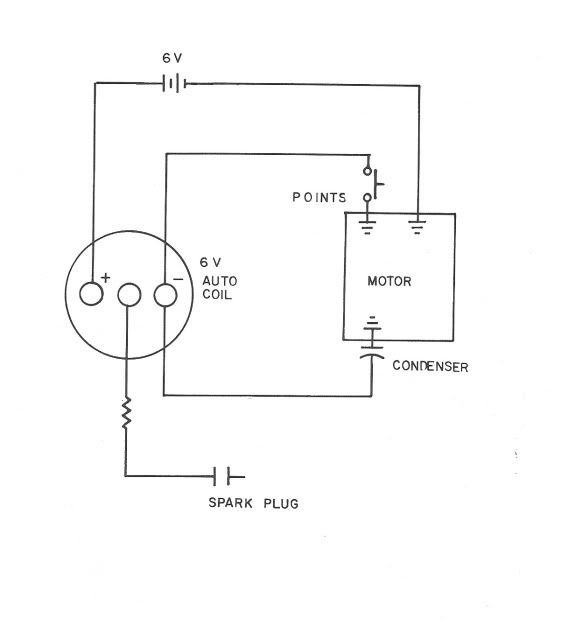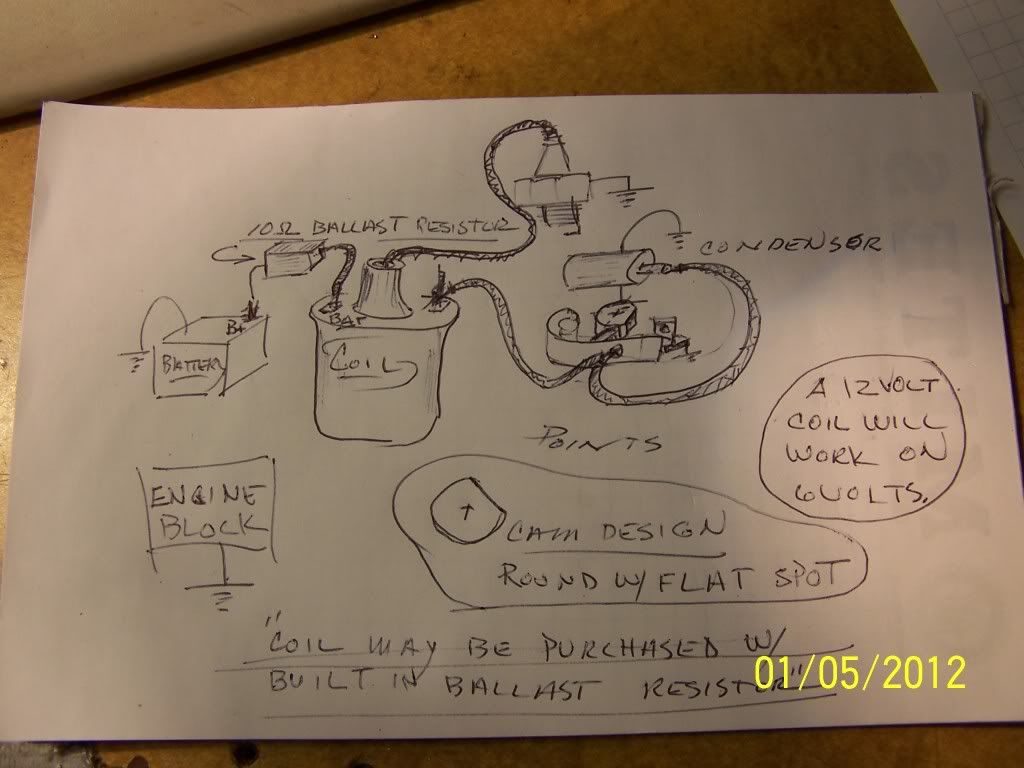Again we have a diagram of a Kettering type ignition, not a buzz coil.
The Ford model T coil was housed in a wood box, about 2x3x5. Inside is a coil of wire on an iron core. There are two coils a primary and a secondary, as in the Kettering coil. But in a buzz coil at the end of the iron core is a set of points arranged so that when the coil is magnetized the points are pulled open. When power is applied the magnet pulls in whats called an armature, which is fixed on a leaf spring and has the contact points at its end.
When current is applied the coil becomes a magnet and breaks the circuit. Current stops flowing, the field collapses, and a high voltage is induced in the secondary. But when the magnetic field drops the spring loaded armature again closes the points, current flows again and the cycle is repeated. This is exactly like a doorbell or buzzer. As long as power is applied to the coil it continues to buzz, at a maybe 1khz rate.
The distributor only switched the low voltage- there was a coil for each plug. When the points closed many sparks were generated in the plug, hopefully at least one of them ignited the mixture.
Besides ignition for model Ts they had a lot of other great uses. The high voltage sparks could be connected to many things, like car seats, urinals, door knobs, anything likely to be touched by an unsuspecting person. Not that I every played such pranks, Ive only been told about them ;D
They were/are often used on single cylinder farm type engines.






